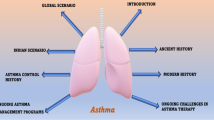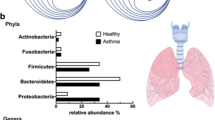Abstract
Objectives: The aim of the present study was to examine the relationships between the ventilation rate and the type of ventilation system, on the one hand, and objective nasal measures, on the other. Methods: A standardized investigation, including acoustic rhinometry and nasal lavage, was performed in the school environment. All 279 school personnel working in the main buildings of 12 randomly selected primary schools in the municipality of Uppsala were invited, and 234 (84%) participated. The dimensions of the nasal cavity were measured with acoustic rhinometry. Eosinophil cationic protein (ECP), myeloperoxidase (MPO), lysozyme, and albumin were analyzed in the lavage fluid. The air exchange rate and the room temperature were measured in the classrooms. Relationships between nasal symptoms, nasal patency, and the concentration of biomarkers, on the one hand, and the type of ventilation system, the air exchange rate, and the temperature, on the other, were analyzed by both crude bivariate analysis and multiple regression models, controlling for the type of ventilation, the air exchange rate, room temperature, age, gender, smoking, atopy, and the urban vicinity of the school. Results: A lower degree of nasal patency as measured by acoustic rhinometry and increased levels of ECP and lysozyme in nasal lavage were associated with a lower air exchange rate in the schools. Although mechanically ventilated schools had higher air exchange rates, they were associated with more nasal symptoms, and nasal mucosal swelling and with increased lavage levels of ECP and lysozyme as compared with schools with natural ventilation only. In contrast, 12 subjects working in a school with mechanical displacement ventilation had more patent noses and lower levels of inflammatory markers as compared with the personnel in schools with natural ventilation only. Conclusion: Our results indicate that both a low air exchange rate and mechanical ventilation systems based on dilution can be associated with reduced nasal patency and an inflammatory biomarker response of the nasal mucosa among school personnel. The only school with sufficient ventilation according to the current Swedish recommendations had a displacement system and the fewest signs of nasal reactions among the personnel.
Similar content being viewed by others
Author information
Authors and Affiliations
Additional information
Received: 1 December 1997 / Accepted: 3 April 1998
Rights and permissions
About this article
Cite this article
Wålinder, R., Norbäck, D., Wieslander, G. et al. Nasal patency and biomarkers in nasal lavage – the significance of air exchange rate and type of ventilation in schools. Int Arch Occup Environ Health 71, 479–486 (1998). https://doi.org/10.1007/s004200050309
Issue Date:
DOI: https://doi.org/10.1007/s004200050309




